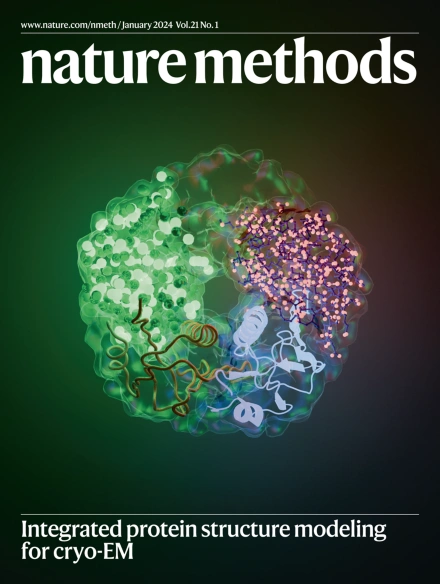利用可解释的深度学习绘制空间基因表达图谱。
IF 36.1
1区 生物学
Q1 BIOCHEMICAL RESEARCH METHODS
引用次数: 0
摘要
空间分辨转录组学技术提供了组织切片中基因表达的高通量测量,但这些数据的稀疏性使空间基因表达模式的分析变得复杂。我们通过使用称为等深的量来导出组织切片的地形图(类似于景观中的高程图)来解决这个问题。等深等高线圈定了具有不同细胞类型组成的区域,等深梯度圈定了表达变化最大的空间方向。我们开发了GASTON(利用神经网络进行空间转录组学组织的梯度分析),这是一种无监督和可解释的深度学习算法,可以同时学习等深度、空间梯度和分段线性表达函数,这些函数可以模拟基因表达的连续梯度和不连续变化。研究人员发现,GASTON可以准确识别多个组织的空间结构域和标记基因,以及大脑中神经元分化和放电的梯度,以及肿瘤微环境中代谢和免疫活性的梯度。本文章由计算机程序翻译,如有差异,请以英文原文为准。

Mapping the topography of spatial gene expression with interpretable deep learning
Spatially resolved transcriptomics technologies provide high-throughput measurements of gene expression in a tissue slice, but the sparsity of these data complicates analysis of spatial gene expression patterns. We address this issue by deriving a topographic map of a tissue slice—analogous to a map of elevation in a landscape—using a quantity called the isodepth. Contours of constant isodepths enclose domains with distinct cell type composition, while gradients of the isodepth indicate spatial directions of maximum change in expression. We develop GASTON (gradient analysis of spatial transcriptomics organization with neural networks), an unsupervised and interpretable deep learning algorithm that simultaneously learns the isodepth, spatial gradients and piecewise linear expression functions that model both continuous gradients and discontinuous variation in gene expression. We show that GASTON accurately identifies spatial domains and marker genes across several tissues, gradients of neuronal differentiation and firing in the brain, and gradients of metabolism and immune activity in the tumor microenvironment. Gene expression topography analysis by GASTON portrays domain organization and spatial gradients of gene expression and cell type composition using spatially resolved transcriptomics data.
求助全文
通过发布文献求助,成功后即可免费获取论文全文。
去求助
来源期刊

Nature Methods
生物-生化研究方法
CiteScore
58.70
自引率
1.70%
发文量
326
审稿时长
1 months
期刊介绍:
Nature Methods is a monthly journal that focuses on publishing innovative methods and substantial enhancements to fundamental life sciences research techniques. Geared towards a diverse, interdisciplinary readership of researchers in academia and industry engaged in laboratory work, the journal offers new tools for research and emphasizes the immediate practical significance of the featured work. It publishes primary research papers and reviews recent technical and methodological advancements, with a particular interest in primary methods papers relevant to the biological and biomedical sciences. This includes methods rooted in chemistry with practical applications for studying biological problems.
 求助内容:
求助内容: 应助结果提醒方式:
应助结果提醒方式:


